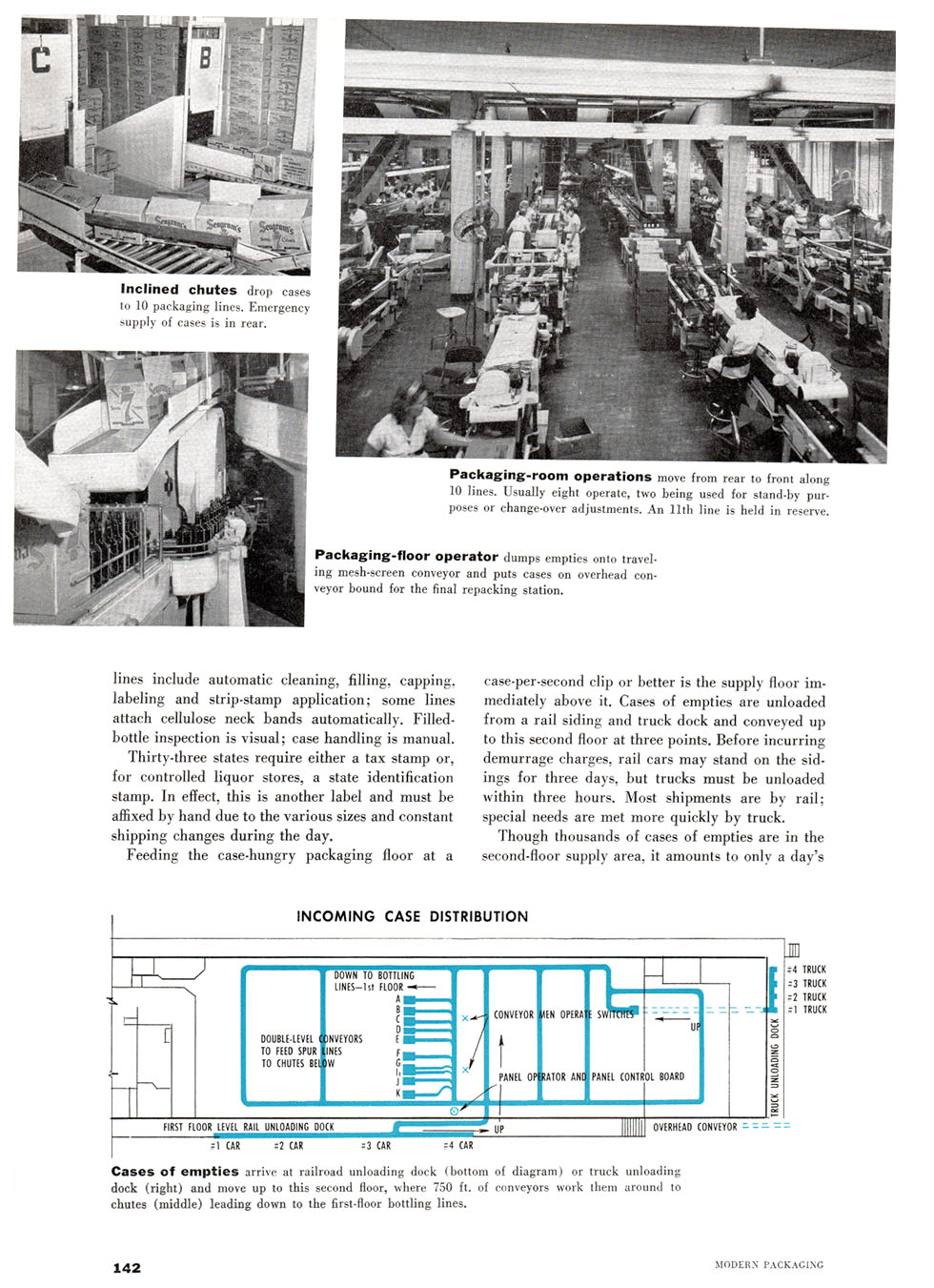


inclined chutes drop cases to 10 packaging lines. Emergency supply of cases is in rear.
Packaging-room operations move from rear to front along 10 lines. Usually eight operate, two being used for stand-by purposes or change-over adjustments. An 11th line is held in reserve.
Packaging-floor operator dumps empties onto traveling mesh-screen conveyor and puts cases on overhead conveyor bound for the final repacking station.
lines include automatic cleaning, filling, capping, labeling and strip-stamp application; some lines attach cellulose neck bands automatically. Filled-bottle inspection is visual; case handling is manual.
Thirty-three states require either a tax stamp or, for controlled liquor stores, a state identification stamp. In effect, this is another label and must be affixed by hand due to the various sizes and constant shipping changes during the day.
Feeding the case-hungry packaging floor at a
case-per-second clip or better is the supply floor immediately above it. Cases of empties are unloaded from a rail siding and truck dock and conveyed up to this second floor at three points. Before incurring demurrage charges, rail cars may stand on the sidings for three days, but trucks must be unloaded within three hours. Most shipments are by rail; special needs are met more quickly by truck.
Though thousands of cases of empties are in the second-floor supply area, it amounts to only a day's
Cases of empties arrive at railroad unloading dock (bottom of diagram) or truck unloading dock (right) and move up to this second floor, where 750 ft. of conveyors work them around to chutes (middle) leading down to the first-floor bottling lines.
>
MODERN PACKAGING